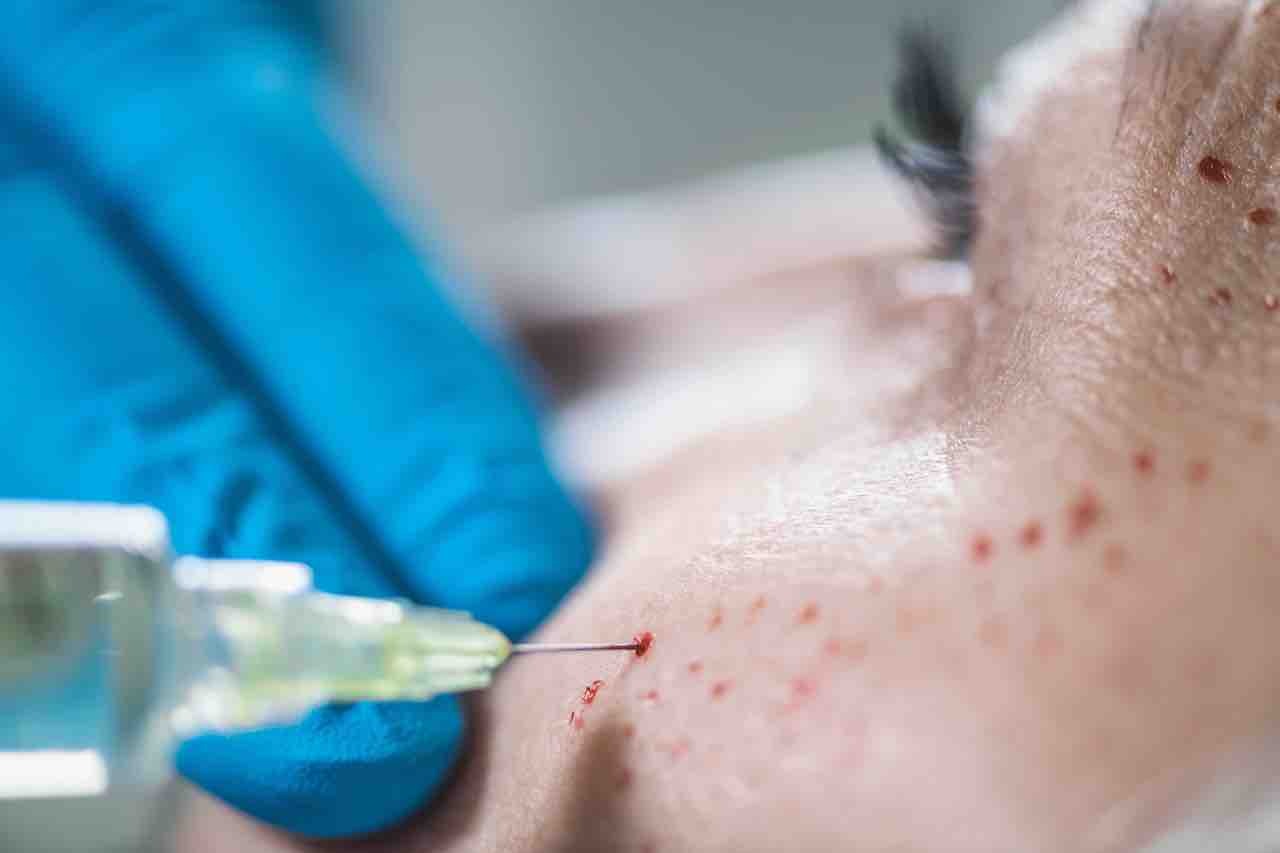Microneedling has surged in popularity due to its remarkable ability to rejuvenate skin, reduce scars, and promote a youthful appearance. However, before one can start offering this transformative treatment professionally, it is essential to understand the microneedling license requirements. These requirements vary significantly by state and can include specific education, certifications, and adherence to state regulations.
The process of obtaining a license is not just about compliance; it ensures that practitioners are well-trained and capable of providing safe and effective treatments. The journey to becoming a licensed microneedling professional typically begins with a thorough education in aesthetics or dermatology, followed by specialized training in microneedling techniques.
Understanding the nuances of state-specific regulations is crucial. Some states mandate that only licensed medical professionals, such as nurses or doctors, perform microneedling, while others allow licensed estheticians to offer the service. Additionally, many states require continuing education to keep the license current, ensuring that practitioners stay updated with the latest advancements and safety protocols.
If you're considering a career in microneedling or expanding your aesthetic services, it is essential to research your state's specific requirements. This knowledge will not only help you comply with the law but also position you as a credible and skilled practitioner in the field.
Ready to take the next step? Book a free consultation or call 647-812-8752 to learn more about how we can help you achieve your microneedling career goals!
Understanding State Regulations for Microneedling

When it comes to microneedling, state regulations play a pivotal role in determining who is authorized to perform the procedure and under what conditions. These regulations are designed to ensure the safety and well-being of clients, as microneedling involves creating micro-injuries in the skin to stimulate collagen production and enhance skin texture.
In some states, only licensed medical professionals, such as dermatologists, nurses, or physicians, are permitted to perform microneedling. This is often due to the invasive nature of the procedure and the potential risks involved, such as infections or improper technique. On the other hand, certain states have less stringent requirements, allowing licensed estheticians or cosmetologists to carry out the treatment, provided they have received specific training in microneedling.
Additionally, some states mandate that microneedling devices must be FDA-approved and used according to the manufacturer's guidelines. This ensures that the equipment meets safety standards and reduces the risk of adverse effects. Practitioners may also be required to operate under the supervision of a medical director or within a medical facility, depending on the state's regulations.
Moreover, continuing education is often a requirement to maintain licensure. This ensures that practitioners stay abreast of the latest techniques, safety protocols, and technological advancements in the field of microneedling. Failure to comply with state regulations can result in fines, licensure revocation, or legal action, emphasizing the importance of staying informed and compliant.
Understanding and adhering to state regulations not only ensures legal compliance but also builds trust with clients, as they can be confident that they are receiving safe and professional care.
Educational Requirements for Microneedling Practitioners

To become a proficient microneedling practitioner, fulfilling the educational requirements is essential. These requirements vary significantly depending on the state, but generally, they encompass both foundational education and specialized training in microneedling techniques.
Initially, aspiring practitioners must complete a basic educational program related to skincare or medical aesthetics. This could be a degree or diploma in fields such as dermatology, nursing, esthetics, or cosmetology. These programs provide a solid foundation in skin anatomy, physiology, and general skincare treatments, which are critical for understanding the principles behind microneedling.
Following the foundational education, practitioners must undergo specialized training specifically focused on microneedling. This training often includes comprehensive coursework that covers the science behind microneedling, proper device usage, safety protocols, and hands-on practice. Many states require this training to be conducted by accredited institutions or certified trainers to ensure the highest standards of education and safety.
In addition to formal education and training programs, many states mandate a certain number of supervised clinical hours. During these hours, trainees perform microneedling procedures under the guidance of experienced professionals. This practical experience is invaluable as it helps trainees develop the necessary skills, confidence, and proficiency to perform microneedling independently.
Finally, continuing education is often required to maintain licensure and stay updated with the latest advancements in microneedling technology and techniques. This ongoing education may include attending workshops, seminars, and relevant courses. By staying informed and continuously upgrading their skills, microneedling practitioners can provide the best and safest care for their clients.
Certification and Training Programs for Microneedling
For aspiring microneedling practitioners, obtaining the right certification and training is a crucial step toward ensuring competence and compliance with industry standards. Certification programs are designed to equip practitioners with the knowledge and practical skills needed to perform microneedling safely and effectively.
Certification programs for microneedling typically include both theoretical and practical components. Theoretical training covers the fundamentals of microneedling, including skin anatomy, wound healing processes, and the benefits and risks associated with the procedure. Practitioners learn about different types of microneedling devices, such as dermarollers and automated pens, and how to select the appropriate tool for each client's needs.
The practical component of the training involves hands-on experience where practitioners learn to perform microneedling procedures under the supervision of certified trainers. This hands-on training is essential as it helps practitioners develop the technical skills necessary to perform microneedling with precision and care. Practitioners are trained in proper hygiene practices, patient assessment, and post-procedure care to ensure the safety and satisfaction of their clients.
Several reputable organizations offer certification programs for microneedling. These programs may vary in length and intensity, but all aim to provide comprehensive training. Some well-known certifying bodies include the American Board of Aesthetic Medicine (ABAM), the Esthetic Skin Institute (ESI), and the International Association for Physicians in Aesthetic Medicine (IAPAM). These organizations ensure that their certification programs adhere to the highest standards of education and practice.
Upon completing a certification program, practitioners must often pass a written and practical examination to demonstrate their proficiency. Successful candidates receive a certification that validates their skills and knowledge, enhancing their credibility and marketability in the field.
Continuing education and recertification are also common requirements. Practitioners must stay informed about the latest advancements in microneedling technology and techniques by attending workshops, conferences, and additional training sessions. This commitment to lifelong learning helps practitioners maintain their certification and provide the best possible care to their clients.
Steps to Obtain a Microneedling License

Obtaining a microneedling license involves a series of steps that ensure practitioners are well-prepared and compliant with regulatory standards. These steps are designed to confirm that practitioners have the necessary education, training, and skills to perform microneedling safely and effectively. Here's a detailed look at the process:
- Research State Requirements: The first step is to research the specific licensing requirements in your state. Regulations vary significantly, so it's essential to understand the prerequisites set by your state's medical or cosmetology board. This may include educational qualifications, training hours, and examination requirements.
- Complete Required Education: Most states require practitioners to have a background in a related field, such as esthetics, nursing, or medicine. Enroll in an accredited program that provides the foundational knowledge needed for microneedling, including skin anatomy, infection control, and wound healing.
- Enroll in a Certification Program: After meeting the educational prerequisites, enroll in a reputable microneedling certification program. These programs offer comprehensive training that covers both theoretical knowledge and practical skills. Look for programs accredited by recognized bodies like the American Board of Aesthetic Medicine (ABAM) or the Esthetic Skin Institute (ESI).
- Complete Hands-On Training: Hands-on experience is crucial for mastering microneedling techniques. During the certification program, you'll perform microneedling procedures under the supervision of experienced trainers. This practical training ensures you can conduct the procedure safely and effectively on real clients.
- Pass the Certification Exam: Upon completing the training program, you'll need to pass a certification exam. This exam typically includes both written and practical components to assess your theoretical knowledge and technical skills. Successfully passing the exam earns you a certification that is often a prerequisite for obtaining a license.
- Apply for a State License: With your certification in hand, you can now apply for a microneedling license through your state's regulatory board. Submit all required documentation, including proof of education, training, and certification. Some states may also require you to pass a state-specific exam.
- Maintain Continuing Education: Once licensed, it's important to stay up-to-date with the latest advancements in microneedling and related fields. Many states require practitioners to complete continuing education courses to renew their licenses periodically. Staying informed and enhancing your skills ensures you provide the highest quality care to your clients.
By following these steps, aspiring microneedling practitioners can navigate the licensing process successfully and embark on a rewarding career in the aesthetic industry.
License Renewal and Continuing Education

Maintaining your microneedling license is an ongoing commitment that involves periodic renewal and continuing education. State regulations often mandate that licensed practitioners stay current with industry advancements to ensure they provide the best care possible. Here's what you need to know about license renewal and continuing education:
- Understand Renewal Requirements: Each state has specific requirements for renewing a microneedling license. These typically include submitting a renewal application, paying a renewal fee, and providing proof of completion of continuing education credits. It's crucial to be familiar with your state's renewal timeline and requirements to avoid lapses in your licensure.
- Complete Continuing Education Credits: Most states require licensed practitioners to complete a certain number of continuing education credits (CECs) within each renewal period. These credits can be earned through various educational activities, such as attending workshops, seminars, and conferences, or completing online courses. The goal is to keep you informed about the latest techniques, technologies, and safety protocols in microneedling.
- Choose Accredited Programs: When selecting continuing education courses, ensure they are accredited by recognized organizations. Accredited programs meet high standards of quality and are often approved by state regulatory boards. Participation in these programs not only fulfills renewal requirements but also enhances your knowledge and skills.
- Document Your Education: Keep thorough records of your continuing education activities, including certificates of completion, course descriptions, and credit hours earned. This documentation is essential when submitting your renewal application and may be required during state audits.
- Stay Informed: The field of microneedling is continually evolving, with new research, techniques, and products emerging regularly. Staying informed through professional journals, industry publications, and networking with peers helps you stay at the forefront of the field and provide the best possible care to your clients.
Renewing your microneedling license and pursuing continuing education are essential steps to ensure you remain a competent and trusted practitioner. By investing in your education and staying current with industry advancements, you demonstrate your commitment to excellence in aesthetics.
Ready to take the next step in your microneedling career? Book an appointment / free consultation or call 647-812-8752 for more info.
